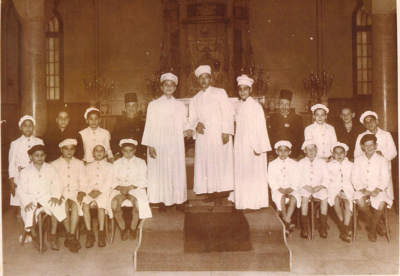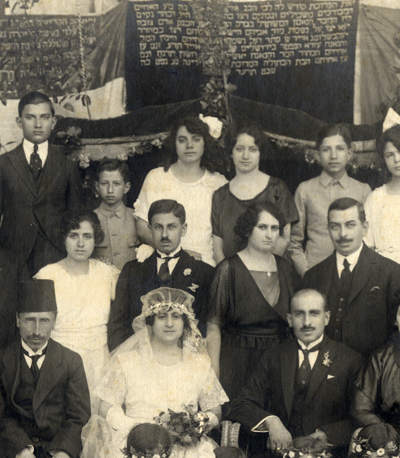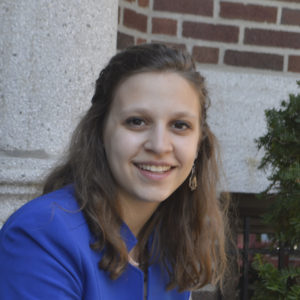Rebecca Wahba’s family had been in Egypt since at least the Spanish Inquisition. But in 1939, when Hitler’s book “Mein Kampf” became a bestseller in Cairo, her great-grandfather left, landing in India by 1945 just as the war was ending.
Wahba, a sophomore global studies major at San Jose State University, never learned about Jews like her great-grandfather in her 13 years of Jewish day school. She did not learn about the Farhud, an Iraqi pogrom in 1941 that killed hundreds and damaged millions of dollars in property. While she learned about famous Jewish scholars like Hillel and Maimonides, she did not learn that both of them came from Mizrahi and Sephardic cultures – Hillel from what is now Iran and Maimonides from Spain.
“People don’t think of Jews as being brown or knowing Arabic or not knowing Yiddish or not having seen a bagel before they came here,” Wahba said. “That’s what it is – when Judaism is defined by European Jews or defined as European Jews.”
Wahba was explaining ashkenormativity, a phrase used in Jewish popular culture to describe situations where Ashkenazi Judaism overrules or informs all Judaism. Common stereotypes about Jews, such as pale skin or Orthodox black hats, most often reference Ashkenazi Jewish culture to the exclusion of Mizrahi and Sephardic cultures.
But in the last five to 10 years, awareness of Judaism’s diversity has increased, said Maya Shemtov, the San Francisco program coordinator for JIMENA, or Jews Indigenous to the Middle East and North Africa. JIMENA works with day schools, college campuses and other organizations to advocate for non-Ashkenazi Jews through education, curriculum and guest speakers.
“I think it’s really, really important that people gain a more complex awareness of Mizrahi and Sephardic life, which is rich, and has been [for] 3,000 years…” Shemtov said.
Shemtov worked with Wahba this past November to create a Mizrahi Week at San Jose State. They tabled outside, hosted a panel of guest speakers and screened a film about non-Ashkenazi Jewish refugees.
“We [tabled] just in the middle of campus,” Shemtov said. “It was amazing to see that many of the students, within and outside of the Jewish community, just don’t know that there are Jews that are not from here.”
“The Ashkenazi Jewish presence – even if it’s not referred to explicitly or it’s not intentional – is always the way [of] Jewish life and Jewish history,” Shemtov said. “JIMENA’s mission is to preserve and share [Sephardic and Mizrahi] histories and stories of personal struggle – to make sure that’s included.”
On the other side of the country at the University of Pennsylvania, junior neuroscience major Isaac Dayan leads a group called the Sephardic Yidden Quakers, or SYQ, a religious community of Sephardic Jews funded through Penn’s Hillel.
Dayan grew up in the large Sephardic community of Brooklyn, surrounded by cultural traditions. He said SYQ is about allowing Sephardic students to do things their way.
“It’s not really an in-your-face kind of community,” Dayan said. “It’s there to have a few things every now and then for the people who are coming from a Sephardic background.”
Throughout a normal semester, Dayan said SYQ hosts Friday night and Saturday services when they can get a minyan. Because it’s an informal community, if they don’t have enough members one night, they join Penn’s traditional Ashkenazi Orthodox prayer group instead. In the past, SYQ has also hosted Yom Kippur services.
“When you’re in synagogue on high holidays, I’m usually just not getting to participate and mostly just following along with the chazzan,” Dayan said. “Here, it’s 10-15 people, everybody really getting to participate and doing things how we want to do them and sing things how we want to sing them.”
This year, SYQ partnered with Jewish and non-Jewish organizations on campus to run an event, called Beyond the Bagel, meant to educate Jews about other Jewish cultures through their food. The group paid to have traditional Sephardic food shipped to Philadelphia from Brooklyn.
Dayan said he’s never felt excluded from Penn’s Jewish community but he’s glad SYQ exists. Sometimes, if his friends are getting ready to bench, or say the prayer after a meal, he’s hesitant to lead because the Sephardic tradition is different.
“Everyone knows I’m going to say it differently and a lot of times I’m actually hesitant to lead it, because I recognize the fact that other people aren’t going to know what I’m saying,” Dayan said. “I back down from leading but people are always like, ‘No, we want to hear it, we want to hear it the Sephardic way.’”
Daniel Cohen, a senior finance and accounting major at George Washington University, grew up in the same Sephardic community as Dayan. His family is Syrian and Colombian, and he considers himself Mizrahi. He’s having a much different experience in college. Although he appreciates the community on campus, he acknowledges there’s no Sephardic or Mizrahi life.
“Sephardic Jews do go to the three main Jewish groups as well, but there’s nothing,” Cohen said. “There’s no Sephardic song, there’s no Sephardic activities.”
Cohen said although he thinks the focus on Ashkenazi traditions is simply because there are more Ashkenazi Jews, he does wish there was a little programming geared toward his culture.
Wahba sees the same dynamic at San Jose State. There aren’t a lot of Jews on campus to begin with, and it doesn’t help that the student body is mainly commuter students who aren’t involved in extracurriculars. A Mizrahi Week event last November brought only about 10 students, which is what she expected.
She said many of the non-Jewish students she meets on a daily basis have never seen a Jew before. If she wants to talk about the Mizrahi experience with them, she first has to explain what Ashkenazi Judaism is.
“I understand why they wouldn’t know anything about it, because it’s very specific to Jewish history,” Wahba said. “I’m happy when they know what a Jew is.”
Both Shemtov and Wahba agree that when Jewish organizations discuss Sephardic and Mizrahi cultures, it’s often through the lens of food or entertainment. While those aspects are important, Wahba challenged Jews to dig deeper into the history behind those traditions.
“It’s fantastic except when you ignore the pogrom, essentially the mob, that would come after Jews; the buses that would run over the businessmen; the people that wouldn’t shake a Jew’s hand in the market,” Wahba said. “I feel like those things get ignored to make it seem like a sweeter story.”
Hannah Bernstein is a New Voices reporting fellow studying journalism and environmental science at Northeastern University.




